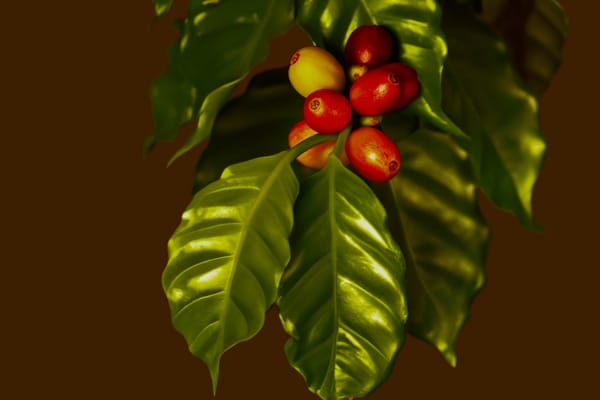Drinking vs. tasting coffee

Have you looked at a roasted coffee packet that mentions that the coffee has, say, 'Grapefruit, Starfruit, Muskmelon' flavours only to find that you can't really taste any of that in your brewed coffee? Over the last seven-plus years of brewing and enjoying my coffee, I could discern broad changes in flavours between two samples of coffee, but sensing these specific flavours eluded me.
Getting into Coffee Cupping*
Last week, I started a month-long course on speciality coffee called 'Crop to Cup' and focused on learning to taste coffee according to the cupping* standards of the Specialty Coffee Association. Basically, you take a specific coffee sample and brew it in five identical cups (five cups are used to identify differences in flavours or defects in the coffee sample) and then smell and taste the coffee to determine the fragrance*, aroma*(yes, they mean different things in the cupping world), flavour, mouthfeel and more.
The 'SCA Flavor Wheel' and challenges with standardisation
The SCA has classified coffee flavour notes into nine categories: floral, fruity, sour/fermented, green/vegetative, roasted, spices, nutty/cocoa, sweet and 'others'.
How can the humble coffee bean end up having such a varied taste? A coffee bean comprises over a dozen compounds - sugars, proteins, lipids, and minerals. The mix of these compounds depends on the terroir (or the environmental factors) in which a coffee grows. When the coffee bean is roasted, depending on the roasting profile, these dozens of compounds get converted into hundreds, if not thousands, of aromatic compounds. When we drink this coffee, our brain tries to place these complex compounds into previously experienced tastes and flavours and perceives the coffee as 'fruity and sweet' or 'roasted and nutty'. Significant learning for me was that people might taste the same coffee and sense different flavours based on their sensory vocabulary and mood that day!

The United States and European countries are two of the largest consumers of coffee globally. The SCA was formed when the Specialty Coffee Association of America and the Speciality Coffee Association of Europe merged to form this 'global' organisation. In the interest of standardisation of the measurement of coffee flavours and aromas, World Coffee Research (WCR) created a sensory lexicon which describes each of the specific flavours in the 'SCA Flavor Wheel'. Unsurprisingly, the lexicon is skewed towards the Western palate. WCR says, "While we aim for the lexicon to be a universal tool for coffee scientists and industry, in its present form, it is not truly global. Many of the references used in the lexicon are only widely available in mass market grocery store chains in the United States." For instance, the reference for the 'Blackberry' flavour is "Smucker's Blackberry Jam", which is unavailable in the Indian market.
The Need for Contextualisation
As the coffee culture in a particular region develops, it's important to contextualise the flavour wheel so that it turns from an intellectual exercise to a practical one.
One notable effort is by Blue Tokai Coffee Roasters, who have developed a contextualised flavour wheel for the Indian palate. It incorporates familiar flavours like jaggery, hing (asafoetida), and tulsi (Indian basil), making it more relatable to local coffee drinkers.

Becoming a better coffee drinker
During the course of the week, I tasted coffee from around the world (something uncommon for the average Indian coffee drinker due to the exorbitant import duties on green coffee) and developed an increased appreciation for the flavours of coffee in my cup.
The week ended with me sitting at Ground Up Coffee & Roastery in Bengaluru and ordering a Liberica* coffee brewed using the pour-over method. I took a whiff of the aroma and got a strong hint of kathal, or jackfruit. I sipped the coffee and found it a complex mix of jackfruit, ending with a lingering aftertaste of molasses. I love the confidence I have developed in discerning flavours in my cup.
What's the most memorable cup of coffee you have tasted?
Curious about contextualising coffee flavours?
- A video that talks about localising the flavour wheel and making it more inclusive:
- How the Global North has standardised what construes as 'good flavours' in coffee and more:

*cupping: A standard method to evaluate coffee's aroma, flavour, and quality by brewing and tasting multiple cups of the same sample
*fragrance vs aroma: in the coffee world, fragrance refers to the smell of dry coffee grounds whereas aroma is the smell of brewed coffee
*liberica: A lesser-known coffee species; has unique fruity and floral flavours but is less commonly grown compared to Arabica and Robusta.




